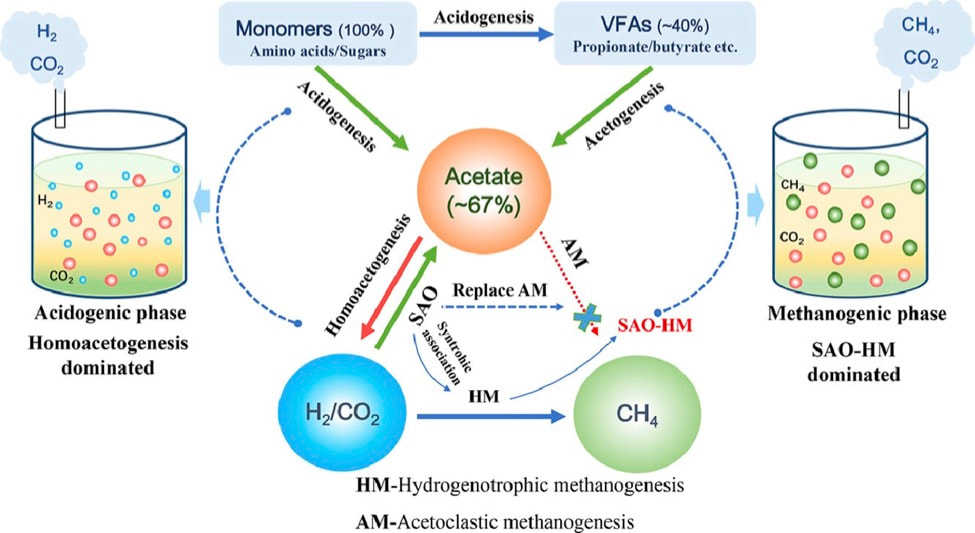Archaea Methanogenic Pathways:
Acetoclastic CH3COOH CH4 + CO2
Hydrogenotrophic CO2 + 4H2 CH4 + 2H2O
Methylotrophic 4CH3OH 3CH4 + CO2 + 2H2O
Bacterial Pathways in Digesters:
Fermentation Produces organic acids from complex biological polymers
Acetogenesis Continued fermentation to CH3COOH
Homoacetogeneis 4H2 + 2CO2 CH3COOH + 2H2O
Metabolic rate at 3 to 10x faster than HM Archaea
SAO CH3COOH 4H2 + 2CO2
Syntrophic with Hydrogenotrophic methanogens
Causes of increases CO2 (lower methane %) in produced gas
- Acetoclastic and methylotrophic methanogens both produce CO2 along with methane. With the acetoclastic making equal parts CO2 and methane. In digesters dominated by acetoclastic organisms (especially Methanothrix from Aster Bio's data), we see lower rates of methane production.
- Overgrowth by homoacetogenic bacteria - these organisms convert H2 and CO2 back to acetate which favors acetoclastic methanogen growth. These organisms deprive desirable hydrogenotrophic methanogens of needed inputs for growth.
- Need for SAO bacterial populations that work directly with hydrogenotrophic methanogens in a syntrophic relationship where the bacteria provide the archaea with H2 and CO2 - the result is improved methane yields.
Good articles on the SAO & Homoacetogenesis bacteria in digester performance.
- Deep insights into the network of acetate metabolism in anaerobic digestion: focusing on syntrophic acetate oxidation and homoacetogenesis - www.sciencedirect.com/science/article/abs/pii/S0043135420313075
- Syntrophy mechanism, microbial population, and process optimization for volatile fatty acids metabolism in anaerobic digestion - www.sciencedirect.com/science/article/abs/pii/S1385894722046162
- Novel syntrophic bacteria in full-scale anaerobic digesters revealed by genome-centric metatranscriptomics www.nature.com/articles/s41396-019-0571-0/


 RSS Feed
RSS Feed